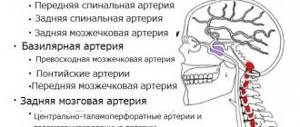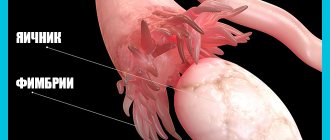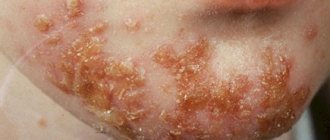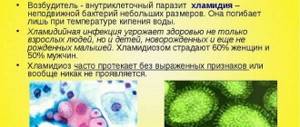Main symptoms:
- Phlebeurysm
- Hypersensitivity to light
- Headache
- Dizziness
- Urinary dysfunction
- Runny nose
- Malaise
- General swelling
- Limited mobility
- Scrotal swelling
- Swelling of the legs
- Swelling of the nasal mucosa
- Shallow breathing
- Fever
- Weakness
- Tearing
- Decreased performance
- Spider veins
- Weight gain
- Rapid breathing
Anasarca is a pathological process that is characterized by the accumulation of fluid in the subcutaneous tissue, which will externally manifest itself as edema. In most cases, it is not an independent disease, but develops against the background of other pathological processes in the body.
Online consultation on the disease “Anasarca”.
Ask a question to the specialists for free: Endocrinologist.
- Etiology
- Classification
- Symptoms
- Diagnostics
- Treatment
The clinical picture of this disease progresses rather slowly, which often, if there are no other symptoms, leads to a delayed diagnosis. This pathological process does not have clear distinctions by age and gender, but it is extremely rarely diagnosed in newborns.
Only a doctor can determine which disease became the trigger for the development of this disease by carrying out the necessary diagnostic measures. Treatment tactics will depend on what exactly caused this disorder.
In this case, it is difficult to make a long-term prognosis, since the outcome will depend on the timeliness of the treatment started, the clinical and morphological picture, as well as on the general health indicators of the patient. The patient's life expectancy will depend on the form and severity of the disease.
Etiology
The causes of anasarca are very diverse, so in some cases it is quite difficult to determine exactly why this pathological process occurred.
Clinicians identify the following, the most common factors for the development of this disease:
- renal failure;
- diseases of the cardiovascular system;
- hypothyroidism;
- hyperaldosteronism;
- allergic reactions;
- increased hydrostatic blood pressure;
- formation of stagnant processes in the blood;
- increased permeability of the walls of blood vessels;
- accumulation of sodium in the blood, which leads to a delay in the removal of fluid from the body;
- chronic diseases of the genitourinary system;
- isolated damage to the thyroid gland;
- Quincke's edema;
- the presence of benign or malignant formations;
- disruption of hormone production by the adrenal cortex.
In addition, anasarca is quite often diagnosed in heart failure.
In some cases, anasarca develops as a complication after long-term use of certain medications or alcohol abuse. In some cases, it is not possible to establish the cause of the development of such a pathological process.
Anasarca for heart failure
Heart failure
Chronic heart failure (CHF) is a syndrome that develops due to the loss of the heart’s ability to provide the body with an optimal amount of oxygen. Blood supply is gradually disrupted.
- Manifestations of CHF include:
- Shortness of breath (breathing becomes rapid, its depth decreases).
- Impaired performance (what loads he can perform without experiencing discomfort depends on the stage of the disease).
- Tachycardia – rapid heart rate.
- Swelling (usually of the legs: legs and feet), up to the development of anasarca.
- The patient is positioned in a position in which he is less bothered by shortness of breath (orthopnea). He tends, for example, to sit up in bed instead of lying down.
Stages of heart failure
- Stage I. There are no clinical manifestations.
- IIA. Disruption of blood flow in one circulation. If the small circle, through which blood moves from the right ventricle to the left atrium, is affected, then the lungs are affected. If the blood flow in a large circle changes pathologically, symptoms of damage to many organs and tissues will appear. IIB. Blood flow suffers simultaneously in both circles. Disorders that go beyond adaptation occur in the cardiovascular system.
- III. Hemodynamic disturbances are maximally expressed. Irreversible changes develop in target organs.
Depending on contraindications for physical activity, a division into four functional classes (FC) of chronic heart failure has appeared.
- With FC I, patients can easily perform normal physical activity.
- FC II is characterized by the absence of any symptoms of the disease at rest when they are present under conditions of increased physical activity.
- With FC III CHF, difficulties arise when performing small physical activities. There are no symptoms at rest.
- In FC IV, the clinic is expressed with minimal load and persists at rest.
Functional classes may change during treatment of the disease, but stages do not change. The functional class is largely determined by the subjective sensations of the patient. It may be affected by comorbidities. Neurotic patients develop poor tolerance to physical activity with minimal changes in the circulatory system. There is no clear relationship between the stage of a process and its functional class.
Types of heart failure
There are left ventricular (most common), right ventricular and biventricular (both ventricles are affected) heart failure.
Edema in heart failure first occurs on the feet, legs (with a vertical position of the body), sacrum, lower back (with a horizontal position), and later anasarca develops as a total swelling of the subcutaneous tissue. In addition, fluid can accumulate in natural body cavities. When exudate accumulates in the abdominal cavity, ascites develops, in the pleural cavity - hydrothorax, in the pericardial cavity - hydropericardium.
If you discover signs of pathological accumulation of liquid exudate in any part of the body, do not self-medicate under any circumstances; in this situation, you should contact a specialized specialist!
Classification
Anasarca is classified based on the etiological factor:
- traumatic - develops against the background of mechanical damage to the skin, in most cases does not require specific treatment, goes away on its own as the integrity of the blood vessels is restored;
- inflammatory – develops against the background of the development of certain inflammatory processes in the body, which can cause the development of serious complications;
- as a result of impaired blood flow or lymphatic system;
- as a consequence of metabolic disorders in the body.
The form of this pathological process can only be determined through diagnostic measures. Self-medication is strongly discouraged.
Treatment
Therapy for anasarca involves removing excess fluid from the body. For this purpose, diuretics with a loop effect are used (Lasix, furosemide, etc.). Drugs to strengthen the heart muscle are mandatory. Cardiac glycosides (dioxide, corglucon, etc.) and a course of treatment are prescribed to improve the supply of oxygen to the heart (riboxin, ATP).
If the renal origin of the disease is established, plasma ultrafiltration procedures or hemodialysis are used. For allergies, glucocorticoids (dexamethasone, prednisolone) are prescribed to relieve swelling, and then antihistamines (suprastin, claritin) are used. For endocrine disorders, replacement therapy and hormonal correction are effective. For myxedema, infusion therapy with plasma and albumin is used.
Symptomatic treatment includes taking painkillers and drugs that normalize respiratory function. In moderate forms of anasarca, diet is adjusted, reducing the consumption of salt and foods that retain water in the body, and also using compression garments.
Symptoms
The danger of this disease lies not only in its clinical and morphological picture, but also in the fact that it progresses slowly and often leads to a delayed start of treatment.
In general, anasarca symptoms have the following:
- increased body temperature;
- swelling of the lower extremities, which gradually rises along the body;
- feeling of weakness, general malaise, even after a full, long rest;
- swelling of the mucous membrane of the nasal passage, resulting in chronic rhinitis;
- lacrimation, increased sensitivity to light stimuli;
- limited movement, decreased performance;
- weight gain for no apparent reason;
- spider veins throughout the body, varicose veins;
- headaches, dizziness;
- for diseases of the genitourinary system - swelling of the scrotum, problems with urination;
- breathing becomes shallow, rapid, and there may be attacks of apnea at night.
Swelling of the legs
In addition, it should be noted that the specific clinical picture will be supplemented by signs that are characteristic of the underlying factor. If you have a personal history of chronic diseases, then in this case their relapse is possible.
Herbal diuretics
- Infusion of birch leaves
. Pour 200 ml of boiling water into two teaspoons of finely chopped leaves, after infusion, drink 1/4 cup up to four times a day. - Lingonberry leaf
. A decoction is used. You can infuse it in a thermos, pour three tablespoons into a liter of boiling water, let it stand and drink half a glass up to three times a day. - Infusion of cornflower flowers
. Prepare an infusion from one tablespoon of flowers (pour 200 ml of boiling water), infuse. Take at least two tablespoons four times a day.
Anasarca is the most severe degree of edematous syndrome and is accompanied by fluid retention in the tissues and internal organs of the human body:
- lower limbs (from foot to thigh);
- external genitalia;
- torso;
- upper limbs (from shoulder to fingertips);
- neck and face;
- pleural cavity and lungs;
- abdomen;
- heart sac (pericardium).
The concept of “anasarca” was specifically introduced into medical science in order to focus the attention of doctors on the critical condition of the sick person’s body, which requires emergency and resuscitation actions.
Normal tissue swelling does not pose a threat to the patient’s life, while anasarca is the accumulation of excess fluid in all body cavities and tissues, which leads to compression of internal organs and disruption of their basic function. A particular threat to the life of a sick person is edema of the pleural cavity and lungs, as it leads to insufficient gas exchange, increasing hypoxia and inhibition of the functioning of the brain and nervous system.
Important! Anasarca is a consequence of decompensated pathologies and conditions of the body. The accumulation of fluid in organs and tissues is a protective reaction of the body, which is triggered to relieve the heart muscle and indicates a danger to human health and life.
The main reasons for the development of severe edematous syndrome of all organs and tissues of the human body are:
- congestion in the vascular bed;
- increased hydrostatic blood pressure on the walls of blood vessels;
- increased vascular permeability and vascular fragility;
- decrease in osmotic pressure of blood plasma;
- retention of sodium ions in tissues.
Such conditions occur with various diseases of internal organs in the stage of decompensation, namely:
- cardiomyopathy, heart rhythm disturbances with symptoms of severe heart failure.
- Diseases of the kidneys and organs of the urinary system, which are accompanied by renal failure, impaired excretion and outflow of urine - usually such conditions are observed with glomerulonephritis, severe pyelonephritis, and renal amyloidosis.
- Hypothyroidism and other diseases of the endocrine system - with myxidema (a critical form of hypothyroidism), the level of protein in the plasma rapidly decreases, which leads to loss of fluid due to its leakage into the tissues of the internal organs.
- Diseases of the adrenal cortex - all of them lead to disruption of the production of aldosterone and cause disturbances in the water-electrolyte balance of the blood. This leads to the retention of sodium salts and an increase in their concentration in the intercellular space, which entails an increase in osmotic pressure relative to the blood plasma.
- Quincke's edema and anaphylactic shock are severe manifestations of allergic reactions that can provoke total swelling of tissues and body cavities. Especially often with a severe allergic reaction, swelling of the airways is observed, which can threaten the patient’s life.
Diagnostics
Since there are more than enough reasons for the development of such a pathological process, comprehensive diagnostics will be required to determine the etiological factor.
First of all, the patient is examined by the following specialists:
- endocrinologist;
- nephrologist;
- neurologist;
- hematologist;
- cardiologist.
If you suspect cancer, you will additionally need to consult an oncologist.
Further diagnostic measures are determined on an individual basis and may include the following:
- UAC and deployed BAC;
- general analysis of urine and feces;
- Ultrasound of the genitourinary system, abdominal cavity;
- chest x-ray;
- ECG;
- CT, MRI of the head;
- test for allergic reactions;
- test for tumor markers.
As a rule, the diagnostic program is drawn up based on the current clinical picture and data that were collected during the initial examination.











